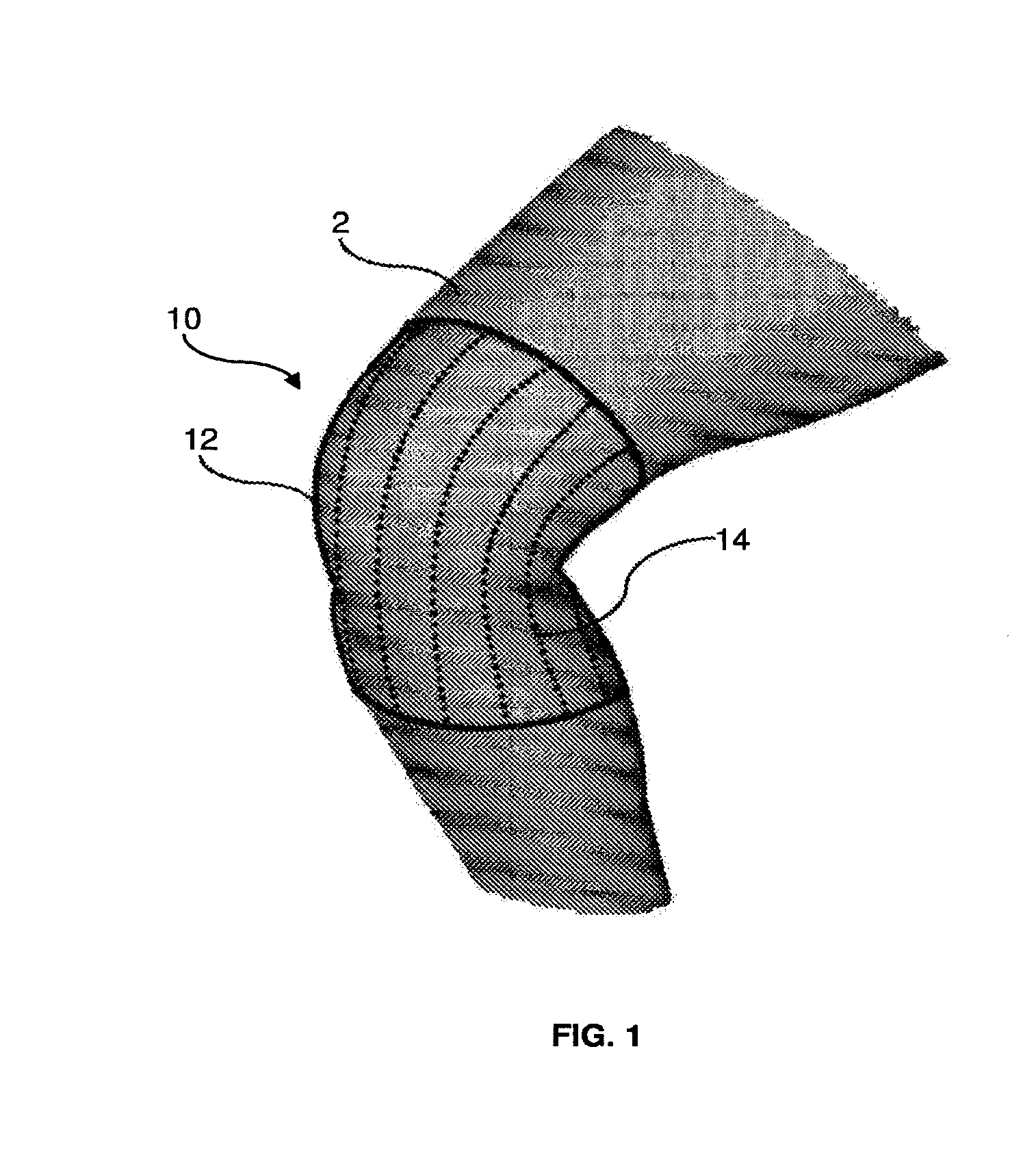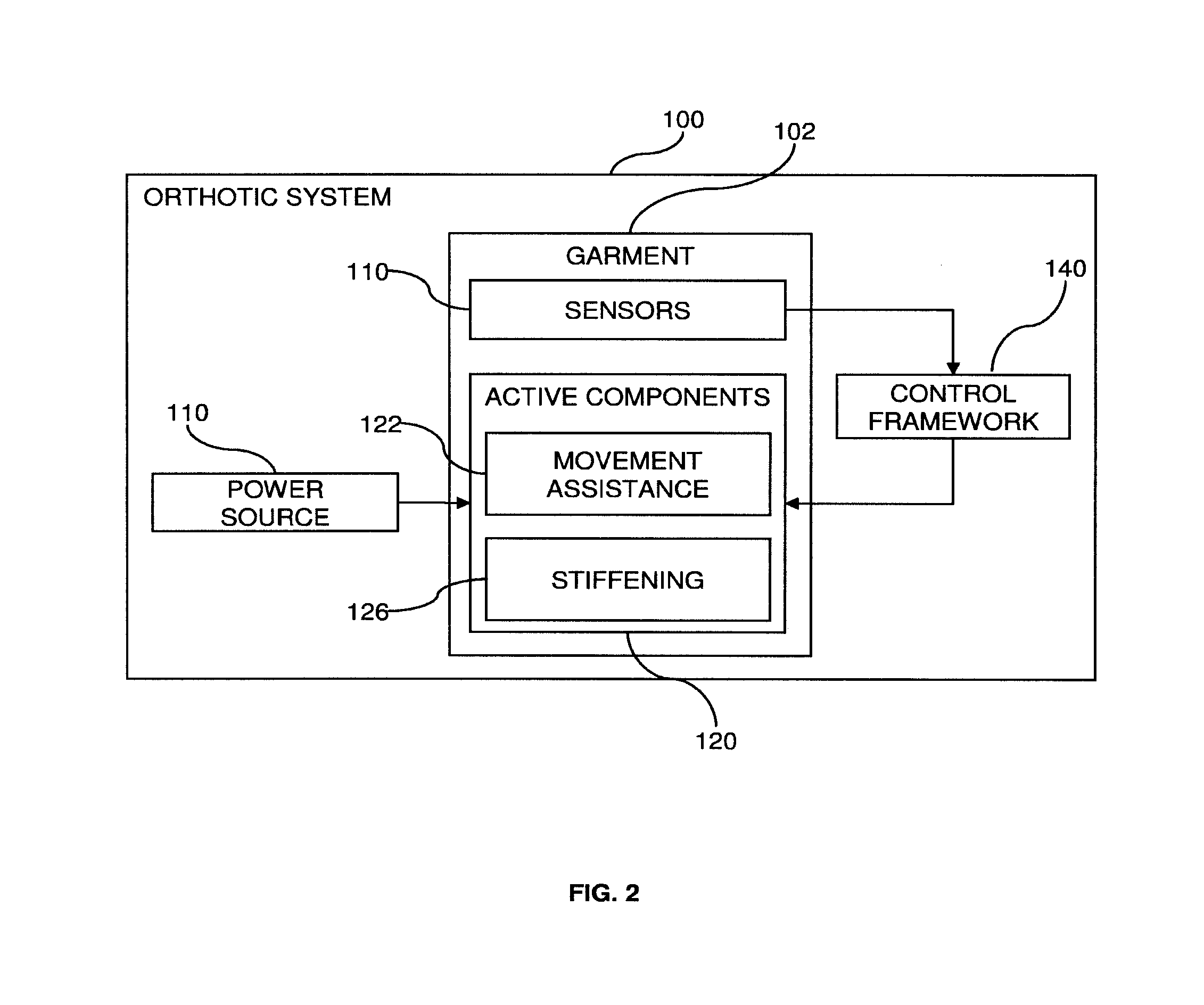Actively controlled orthotic devices
a technology of active control and orthotics, applied in the field of orthotics, can solve the problems of increased medical problems, reduced power generation at the ankle, and increased use of the afo, and achieve the effects of improving the quality of life, and improving the safety of us
- Summary
- Abstract
- Description
- Claims
- Application Information
AI Technical Summary
Benefits of technology
Problems solved by technology
Method used
Image
Examples
Embodiment Construction
[0022]Referring to FIG. 1, an example embodiment of an orthotic system 10 according to aspects of the present invention is illustrated. In particular, FIG. 1 shows that the orthotic system 10 includes a soft, flexible garment 12 shaped as a knee brace to fit tightly over a subject's knee 2. The orthotic system 10 employs active components 14 that can be controlled to dynamically apply varying assistive and supportive contact to the subject's knee 2. In particular, the active components 14 can be embedded within, or otherwise incorporated with, the garment 12. The active components 14 can be controlled according to the orientation and locomotion of the knee 2. The orthotic system 10 can be applied to the subject's knee 2, for example, to assist in knee flexion and extension for locomotion assistance, gait rehabilitation, and gait training. Moreover, the orthotic system 10 can be used as a daily assistive device or as a rehabilitation aide.
[0023]Although the garment 12 of the orthotic...
PUM
 Login to View More
Login to View More Abstract
Description
Claims
Application Information
 Login to View More
Login to View More - R&D
- Intellectual Property
- Life Sciences
- Materials
- Tech Scout
- Unparalleled Data Quality
- Higher Quality Content
- 60% Fewer Hallucinations
Browse by: Latest US Patents, China's latest patents, Technical Efficacy Thesaurus, Application Domain, Technology Topic, Popular Technical Reports.
© 2025 PatSnap. All rights reserved.Legal|Privacy policy|Modern Slavery Act Transparency Statement|Sitemap|About US| Contact US: help@patsnap.com



